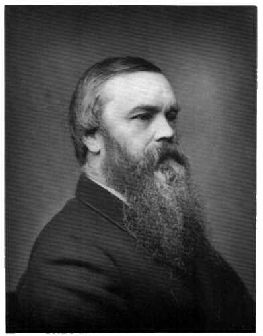John Henry Chamberlain
 John Henry Chamberlain (21 June 1831 -
John Henry Chamberlain (21 June 1831 -
Born and educated in Leicester, he moved to Birmingham in 1853 following a period of experience in London and, later, travelling in Italy. The first house he designed, 12 Ampton Road in Edgbaston, was built in 1855 for a relative, John Eld, in the Victorian gothic style. Not well received in a town still used to classical forms, he did not receive much work for the next few years aside from a shop he designed, again for John Eld, on Union Street (demolished in 1862).
From 1864, Chamberlain went into what would go on to become a highly successful business partnership with William Martin, who had replaced D.R. Hill as the public works architect. They won the commission of 41 board schools (as a result of the Elementary Education Act of 1870), including Bloomsbury Board School in Lingard Street. The schools were a clear expression of the Civic Gospel spirit -
His close friendship with Joseph Chamberlain, elected mayor of Birmingham from 1873, would also be of benefit to his career. Joseph Chamberlain was an advocate of social reform and a champion of the Civil Gospel movement. As part of Joseph’s inner circle, John Henry Chamberlain designed a number of civic structures – including hospitals, libraries and public utilities -
His notable contributions include: the extensions to the Birmingham and Midland Institute, the rebuilding of the Birmingham Central Library which reopened in 1882 (demolished in 1974) and the Shakespeare Memorial Room which the library housed. The Shakespeare Memorial Library is now housed at the Library of Birmingham. He also designed Highbury Hall in Moseley, which became the Birmingham residence of Joseph Chamberlain.
The Birmingham School of Art, is generally considered to be Chamberlain’s finest work and the clearest form of expression of the Civic Gospel. It was commissioned in January 1882 and Chamberlain had completed plans shortly before his sudden death in October 1883. His devotion to John Ruskin can be clearly seen through his Gothic style and the use of detailed, naturalistic elements. His designs were carried out by his partner, William Martin, and final completed two years after Chamberlain’s death.
He is buried in Key Hill Cemetery in Birmingham’s Jewellery Quarter.